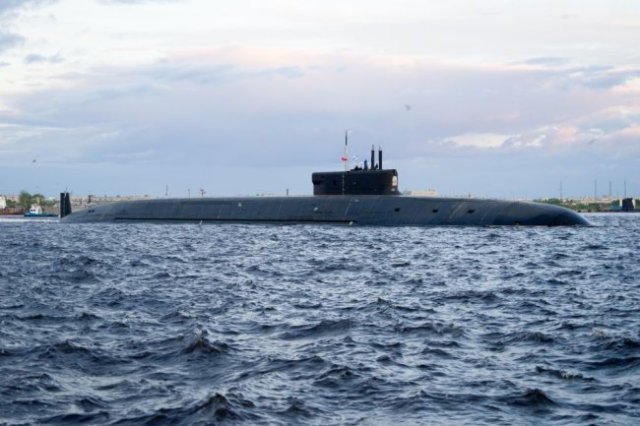In August, a ceremony of laying two new strategic class nuclear submarines was held in Russia: "Prince Potemkin" and "Dmitry Donskoy". With them, the total number of submarines under construction designed to launch ballistic missiles has grown to five. The same number of nuclear-powered vessels of this type are already in service. Earlier, the command of the Russian Navy announced the upcoming decommissioning of the Yekaterinburg type 667BDRM Dolphin submarine (Delta IV according to the NATO classification). These events show that Russia is in full swing modernizing its strategic submarine fleet - which its competitors have been afraid of for so long, writes 19fortyfive.
The first Soviet submarines with ballistic missiles were the Project 627 "Kit" submarines. They had three missiles in the mines behind the superstructure, eight ships of the series were built from 1958 to 1962. However, these were rather demonstrators designed to show that the Soviet Union is not lagging behind the United States in the creation of nuclear submarines with nuclear weapons.
Representatives of the next project, 667 Navaga (Yankee), became truly combat strategic submarines. Each submarine had 16 ballistic missiles and could launch them from an underwater position. Then there were "Squid" and "Dolphins" - improved versions, some of which still serve. It was the most massive series of 43 ships.
The last six nuclear-powered ships built in the USSR belong to the type "Shark" (Typhoon). These are the largest submarines ever built in the world. They carried 20 R-39 ballistic missiles each and could break through the ice at the North Pole to launch them.
The creation of a Borei-type submarine began in the Soviet Union, but the project was implemented in metal already in Russia. These are the most advanced strategic submarines ever built in the Russian Federation: with a digital control system and jet propulsion, which made the nuclear-powered ships much quieter than their predecessors.
The submarines currently under construction belong to the improved Borey-A project. They are slightly larger and have even wider capabilities.
Anton Valagin

